Heat is a form of energy that can be transferred by three different modes from a hot body to a cold body or from higher to lower temperatures. Total heat transfer is equal to the sum of heat transferred by all three modes of heat transfer: Conduction, Convection, and Radiation.
In this article, we will discuss various modes of heat transfer, conduction, convection, and radiation and how to calculate them.
Modes of Heat Transfer
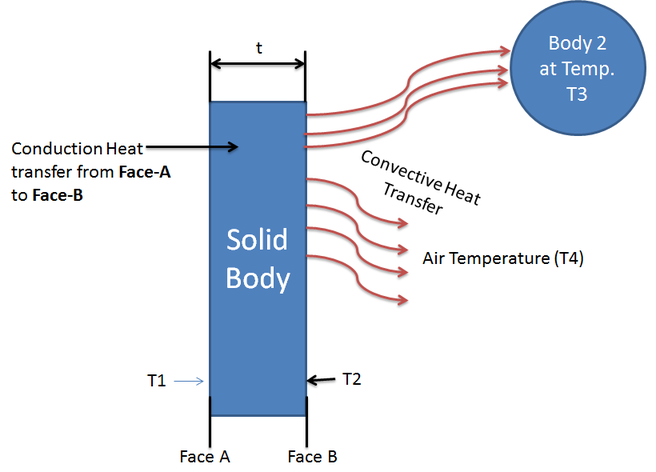
As shown above, A good example of heat transfer is when one side of a metal block (Face A) is heated. Heat is transferred from face A to face B through conduction. And when air is flowing over a hot surface. Convective heat transfer takes place through the air. Whereas radiation heat transfer takes place even if the body is in a vacuum.
Therefore here are the three modes of heat transfer:
- Conduction
- Convection
- Radiation
Conductive Heat Transfer
Transfer of heat within a thermally conductive body or between thermally contacted bodies due to temperature difference is known as conductive heat transfer. Conduction heat transfer between solid bodies occurs due to molecular excitement. Read this article for more details on conductive heat transfer.
As shown in the image, when a conductive metal plate is heated at one end. Transfer of heat takes place from the high to low temperature area due to molecular excitement. Conduction heat transfer takes place in thermally conductive bodies.
The rate of conduction heat transfer is directly proportional to material thermal conductivity. For example, Considering all other parameters equal. The rate of heat transfer will be higher in copper compared to plastic material.
Conductive Heat Transfer Calculation
The rate of heat transfer through conduction is governed by Fourier’s law of heat conduction. The rate of conductive heat transfer is directly proportional to the contact area, material thermal conductivity, temperature difference, and inversely proportional to the thickness.
Conductive Heat transfer (Qc) = – K A dT / L
Where
Qc = Conductive heat transfer per unit time in watt
A = cross-section area in square meter
k = Material Thermal Conductivity
dT = (T2-T1)
L = Thickness or length of the part
Convection Heat Transfer
Convective heat transfer involves the transfer of heat from one place to another by the movement of fluids (Air or liquid). When molecules move from one place to another they carry heat with them.
As shown in the above image, when water is heated in a bowl. Transfer of heat takes place due to the motion of molecules from heated bottom surface to relatively cold top surface. Read this article for more details on convection Heat transfer.
Convection Heat Transfer Calculation
The rate of convective heat transfer is governed by Newton’s law of cooling. It is directly proportional to heat transfer surface area, convective heat transfer coefficient, and temperature difference.
Convection Heat transfer (Qv) = hc A dT
where
Qv = Convective heat transfer per unit time in Watt
A = heat transfer area in square meter
hc= Convective Heat Transfer Coefficient (W/m² K)
dT = Temperature Difference
Convection Heat Transfer Types
Here are the two types of convective heat transfer:
- Natural Convection
- Forced Convection
1) Natural Convection
Natural convective heat transfer is caused by buoyancy forces. Buoyancy forces are generated due to the density and temperature variation of fluid. During natural convection hot fluid/air rises upward and is replaced by cooler fluid/air. Further, this fluid will also heat and rise. Gravity plays a very important role during natural convection.
2) Forced Convection
Forced convective heat transfer occurs when the flow of fluid/air is caused by an external force such as a fan or pump.
Convection Heat Transfer Coefficient
Convective heat transfer coefficient (hc) value depends on the type of media (gas or liquid), Flow velocity, and temperature difference.
Convective Heat Transfer coefficient for Air
Natural Convection = 5 – 25 W/m² K
Forced Convection = 10 – 200 W/ m² K
The formula for Convective heat transfer coefficient Calculation. (for air)
v = Relative speed of the object through the air. This formula works for a velocity range of 2 to 20m/s .
Radiation Heat Transfer
Radiation heat transfer is the transfer of heat from one body to another in the form of electromagnetic waves. Most of these waves lie in the infrared region. Unlike Conduction and Convection, Radiation heat transfer does not require any solid, liquid, or gas. For example transfer of heat from the sun to earth takes place through vacuum space.
No physical contact between objects is required for radiation heat transfer. Object finish/color affects the rate of radiation heat transfer. Read this article for more details on radiation heat transfer.
Radiation Heat Transfer Calculation (Stefan-Boltzmann Law)
Stefan-Boltzmann’s Law of thermal radiation states that: The rate of radiation heat transfer per unit area in a black body is directly proportional to the fourth power of the body temperature.
Radiation Heat Transfer = ε σ T⁴ A
T = absolute temperature in Kelvin
A = area of the emitting body in square meter
ε = emissivity coefficient of the body
σ = Stefan Boltzmann Constant = 5.6703 x 10⁸ W/m² K⁴
To sum up, the transfer of heat from one body to another takes place by three modes of heat transfer: conduction, convection, and radiation. Total heat transfer is the sum of all three modes of heat transfer: Conduction, Convection, and Radiation. You can also use this calculator to calculate the amount of heat transferred using conduction convection and radiation.
We will keep adding more information on different modes of heat transfer. Please add your suggestions, comments, or questions to Modes of heat transfer Conduction, Convection and, Radiation.

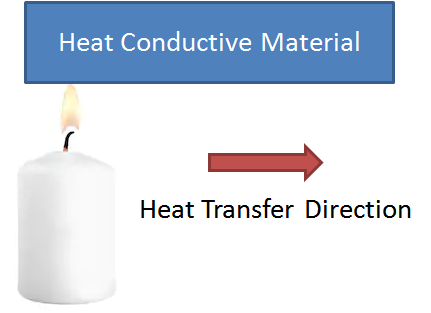
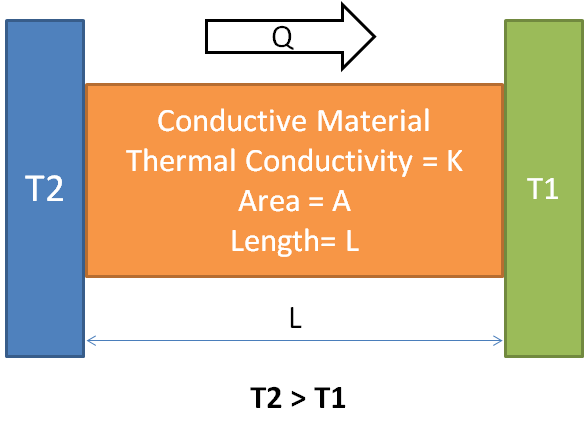
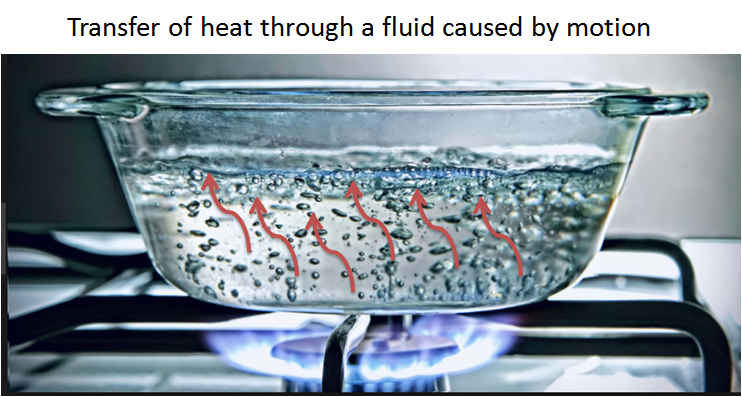
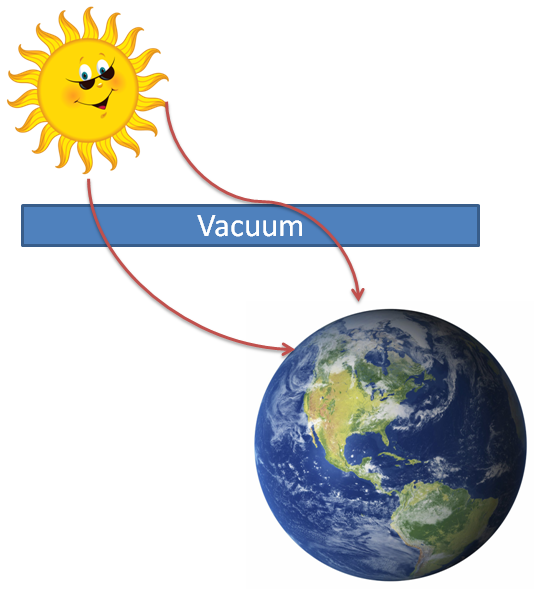
I believe your value for Bolzmann’s constant is wrong and that it should be stated as 5,6703 x 10^-8 (-8 not +8) I guess the assumption is that the m^2 and the K are stuck together as it relates to per square metre and per square degrees Kelvin. I hope this helps.